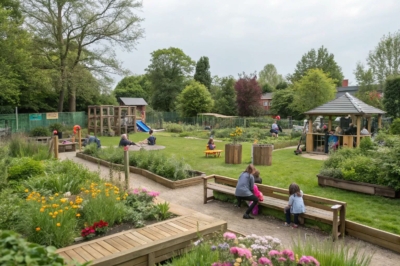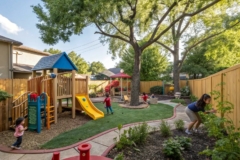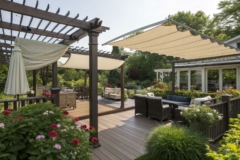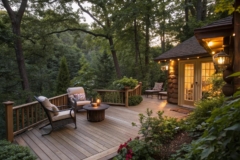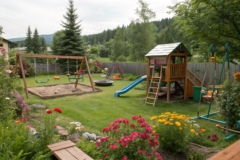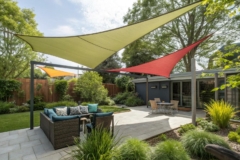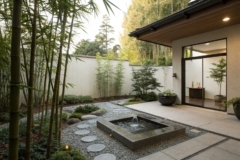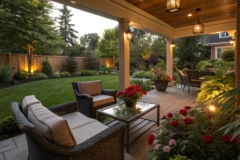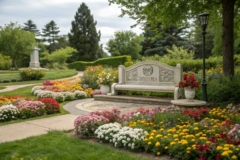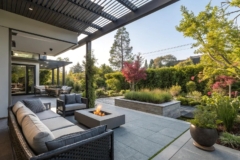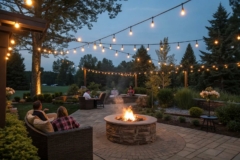1. Flexible Seating
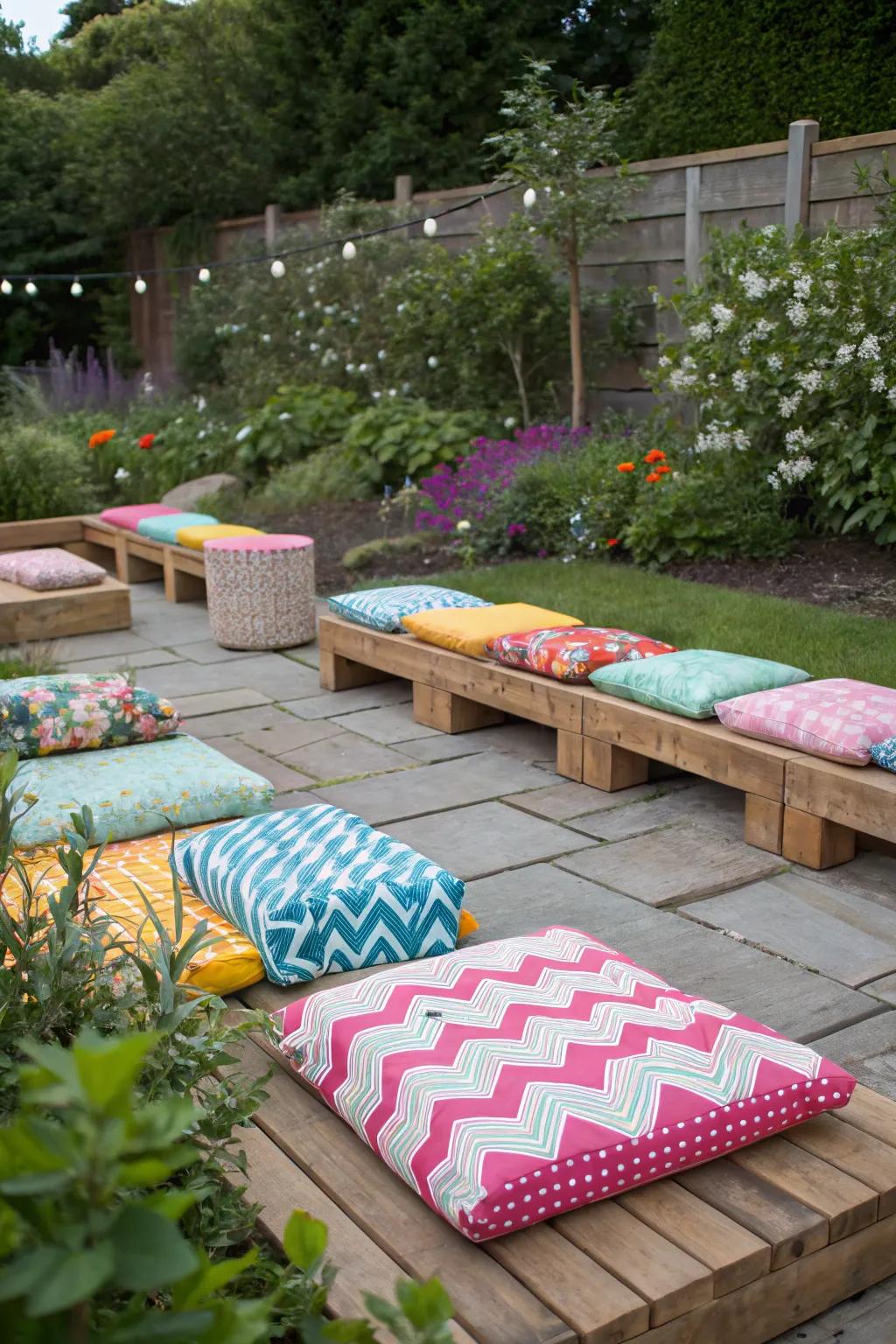
Use movable seating like cushions and benches to create a versatile learning environment. In my garden, colorful cushions turn any spot into a cozy reading nook.
A few suggestions:
- Colorful Outdoor Cushions: Brighten your garden spots with colorful cushions, adding comfort and style effortlessly.
- Wooden Garden Benches: Place sturdy wooden benches for flexible, rustic seating in your outdoor learning area.
- Outdoor String Lights: Enhance your garden’s ambiance with warm outdoor string lights for evening settings.
2. Outdoor Art Studio
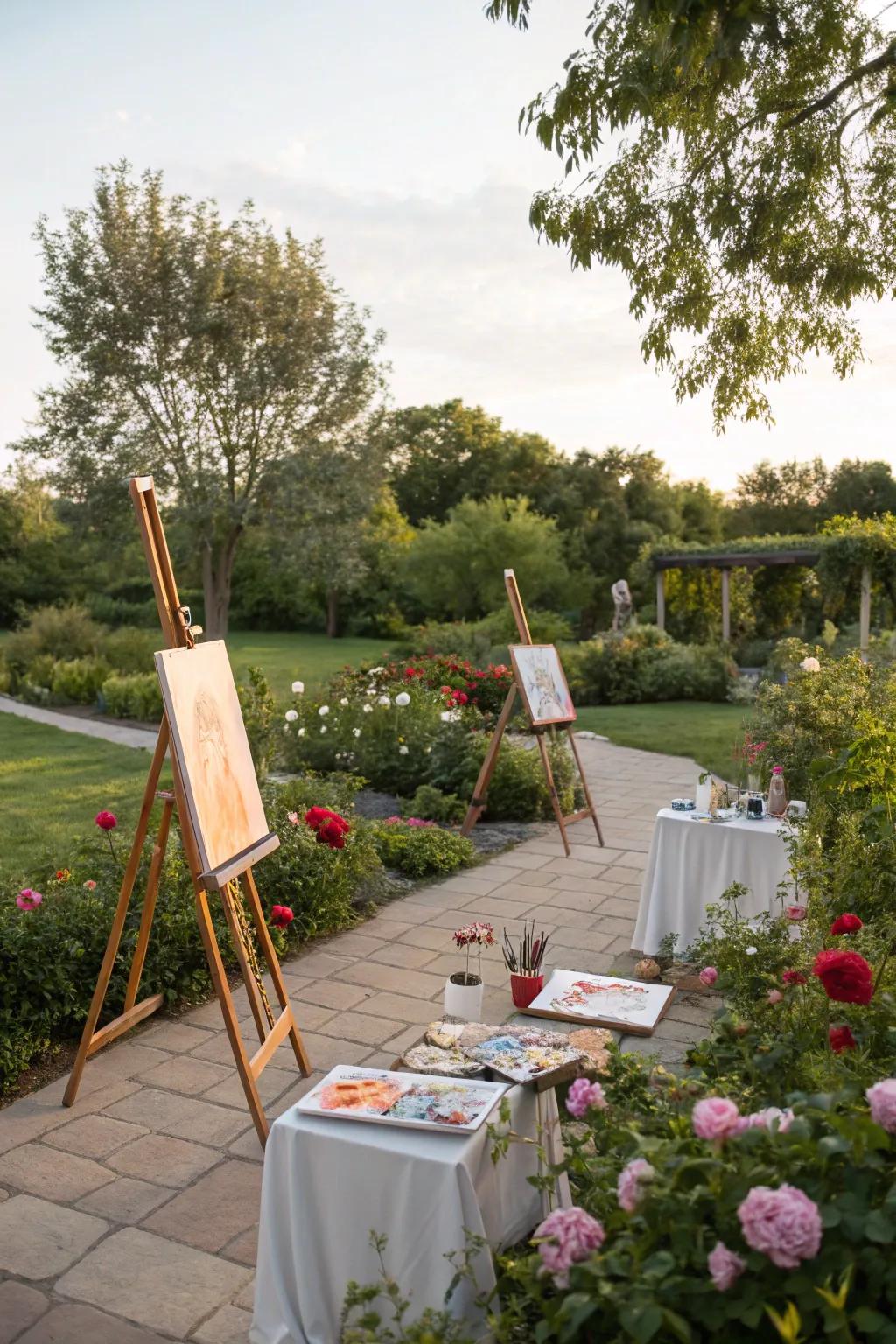
Set up an outdoor art studio with easels and supplies for creative expression. My garden’s art corner is a sanctuary for budding artists.
May just do the trick:
- Adjustable Wooden Easel: Elevate your art with a sturdy easel, perfect for painting in natural surroundings.
- Weatherproof Art Supply Organizer: Keep your paints and brushes organized and safe with a durable outdoor supply organizer.
- Portable Acrylic Paint Set: Explore vibrant colors with a portable paint set, ideal for outdoor artistic adventures.
3. Natural Play Areas

Incorporate natural elements like rocks and logs into play areas for a tactile learning experience. I’ve turned my backyard into a mini adventure zone with a few well-placed boulders and logs.
Might be a good match:
- Outdoor Climbing Boulders: Maximize outdoor fun! Add tactile climbing excitement to your backyard adventure park.
- Garden Landscape Logs: Create natural balance beams with these logs for an engaging play experience in your yard.
- Solid Wood Stepping Stones: Enhance pathways with these charming wooden stepping stones for active outdoor exploration.
4. Natural Materials for Experiential Learning
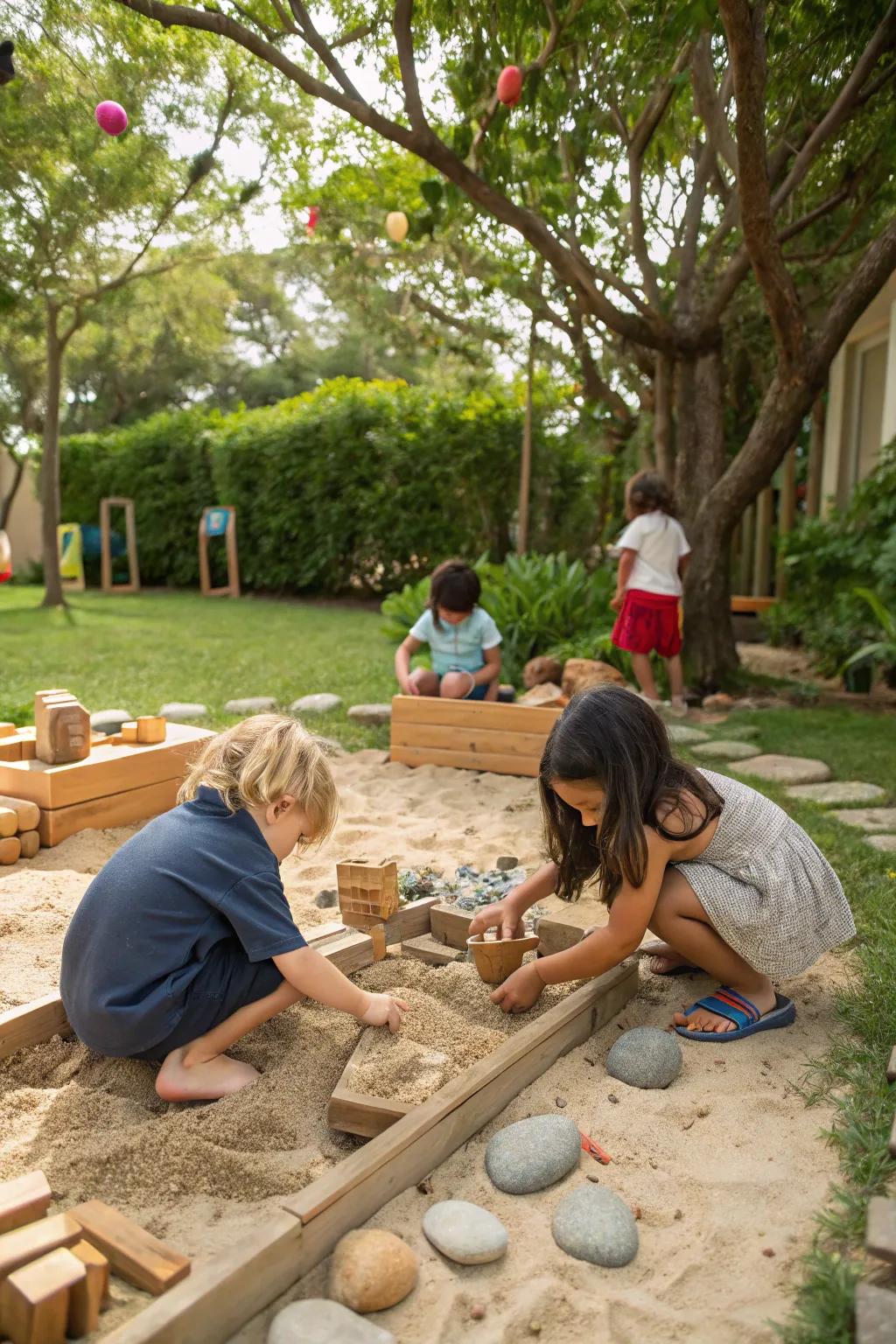
Use sand, stones, and wood for sensory-rich learning projects. I’ve seen kids spend hours building and learning with these simple materials in my yard.
Maybe worth checking out:
- Children’s Wooden Building Blocks Set: Encourage creativity and tactile play with durable wooden blocks perfect for endless building fun.
- Outdoor Sandbox with Cover: Create a sensory-rich play area with a spacious sandbox for endless digging and building adventures.
- Natural River Stones for Kids: Inspire imaginative outdoor learning with smooth, natural stones perfect for games and educational activities.
5. Outdoor Classrooms
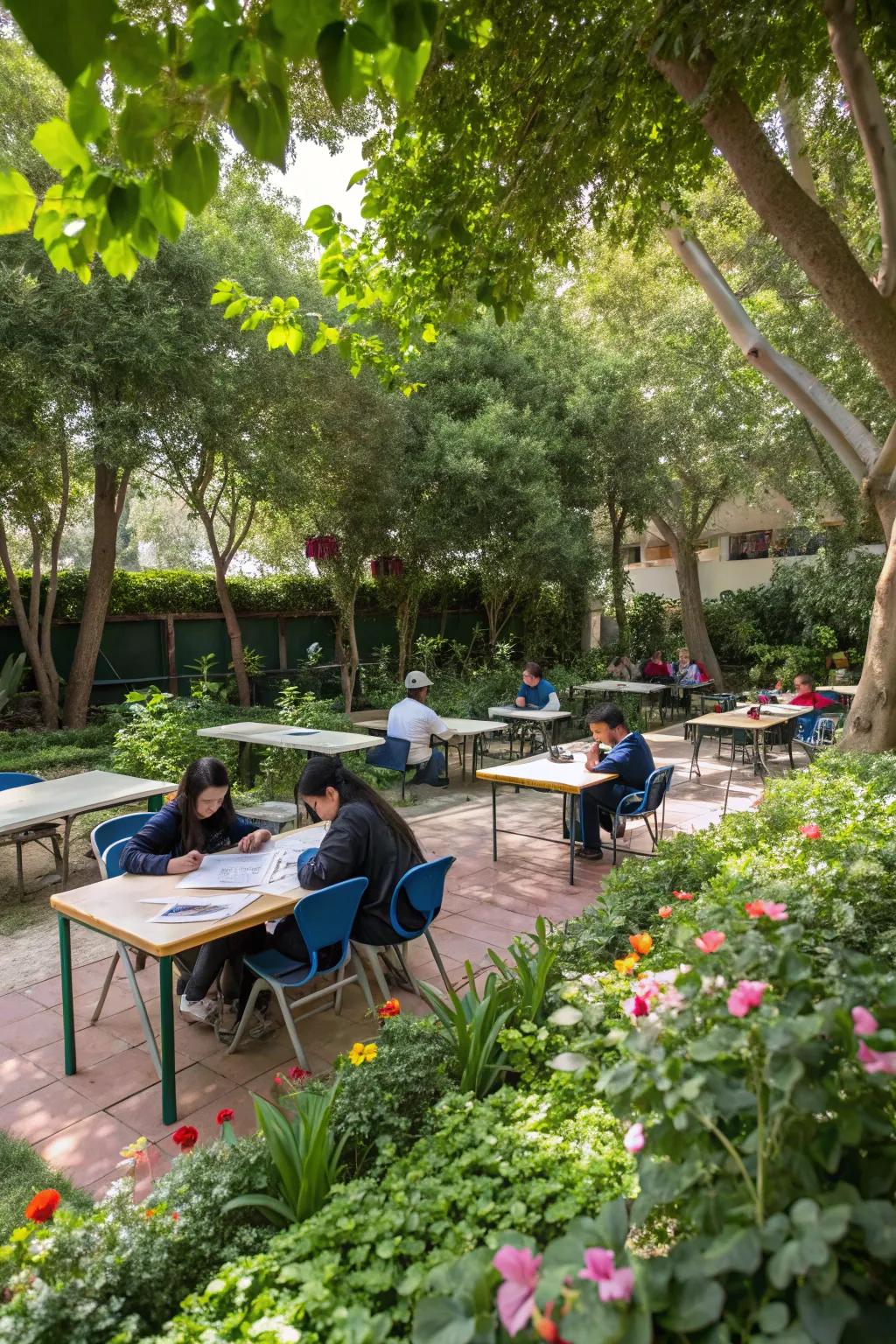
Arrange seating and tables to mimic indoor classrooms but with a natural twist. I love hosting workshops in my outdoor classroom setup.
Consider these options:
- Weather-resistant outdoor tables: Explore these durable tables for a sturdy and versatile outdoor learning environment.
- Ergonomic outdoor chairs: Discover comfortable seating options designed to enhance focus and comfort during outdoor classes.
- Portable shade canopies: Stay cool and protected with these easy-to-set-up shade solutions for your outdoor space.
6. Sensory Play Installations
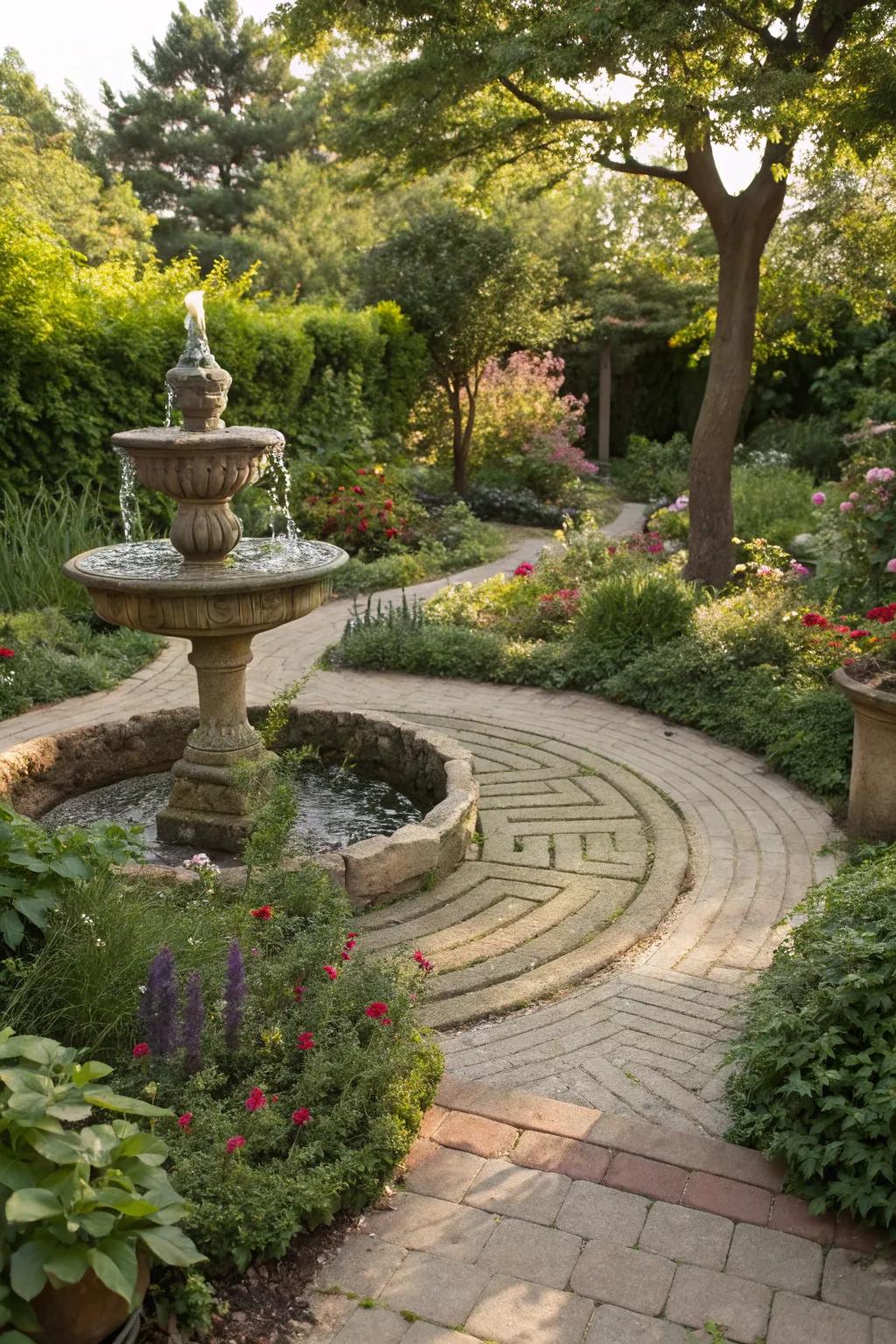
Design sensory-rich spaces with water features or textured paths. In my garden, a small water fountain captivates with its soothing sounds.
You might like:
- Outdoor Water Fountain: Enhance your garden with a soothing water fountain, creating a calming sensory experience.
- Textured Garden Path Tiles: Upgrade your garden paths with textured tiles, adding sensory-rich outdoor exploration.
- Solar Garden Lights: Illuminate your garden paths with eco-friendly solar lights for a magical evening atmosphere.
7. Nature Observation Stations
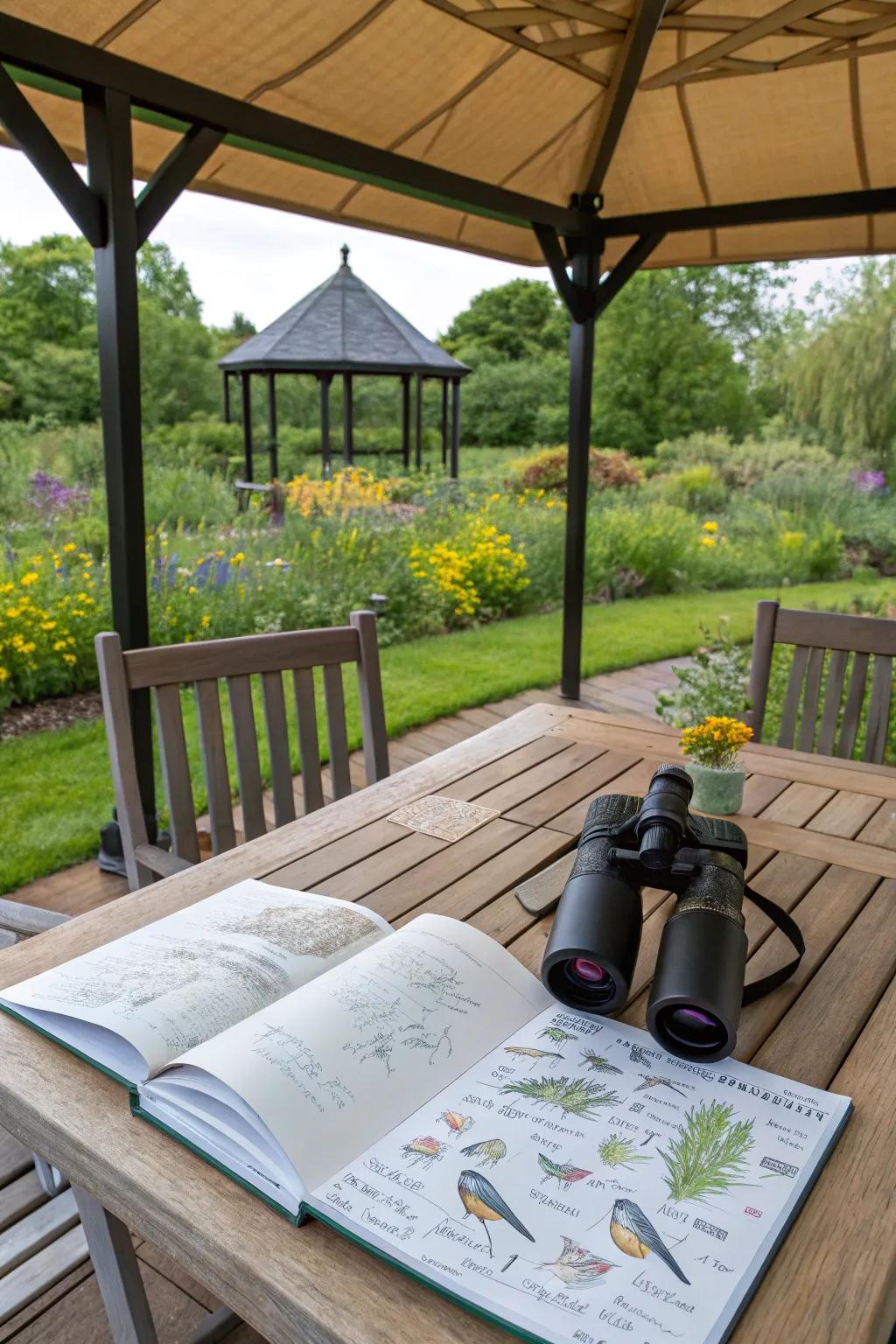
Create observation stations with binoculars and journals for nature studies. We love documenting the wildlife that visits our garden.
Try these:
- High-Quality Binoculars: Enhance your wildlife observation with durable binoculars for a crystal-clear view of nature.
- Nature Journals and Sketchbooks: Document your outdoor findings with artistic flair using specialized nature journals and sketchbooks.
- Outdoor Observation Gazebo: Create a perfect observation spot in nature with this stylish and functional outdoor gazebo.
8. Shaded Areas
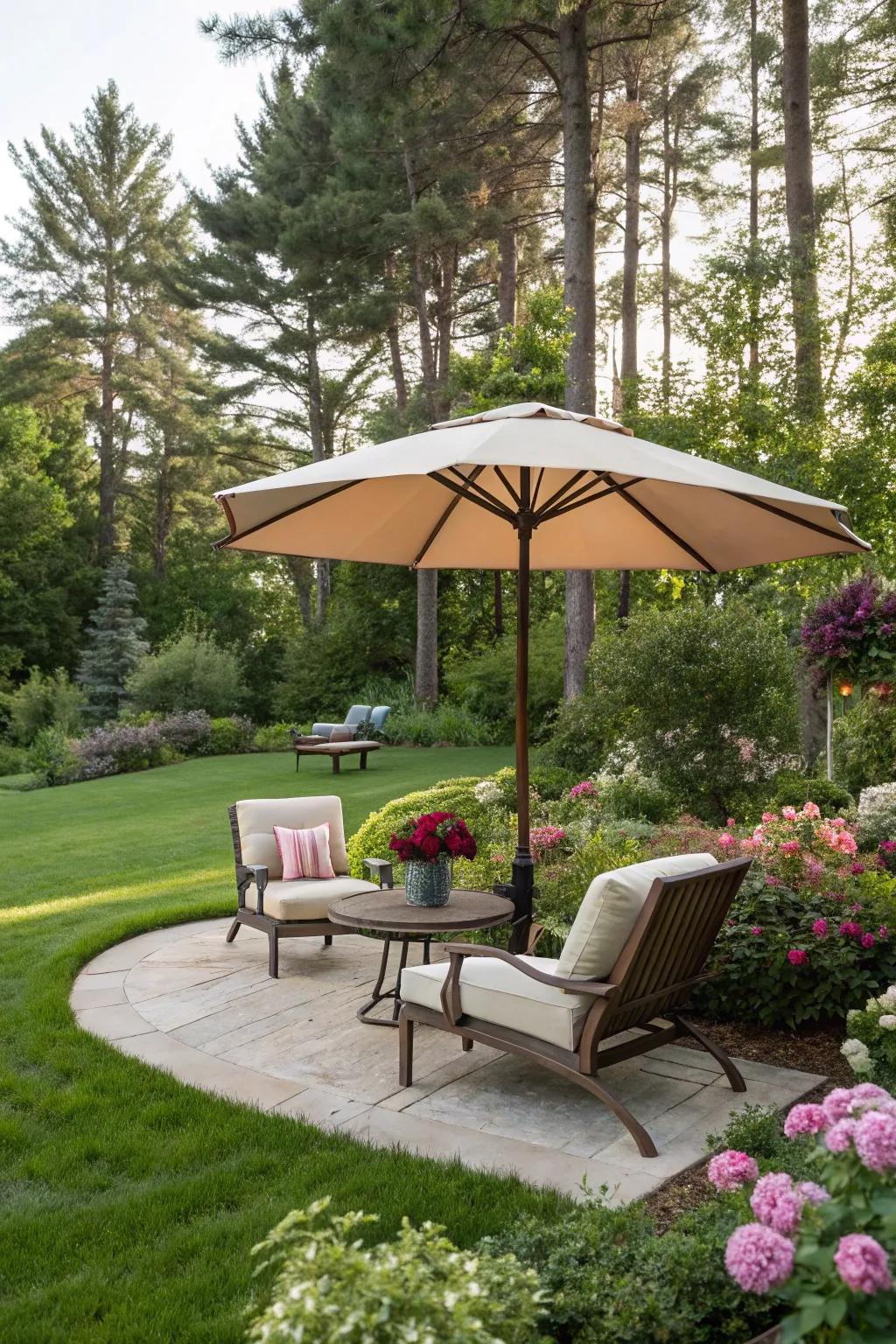
Create shaded spots with umbrellas or canopies for comfort during sunny days. My patio umbrella doubles as a reading shelter on hot afternoons.
A few choices to try:
- Patio Umbrella: Create a cool reading spot with a patio umbrella. Enjoy outdoor relaxation even on sunny days.
- Retractable Awning: Install a retractable awning for flexible shade and sun protection in your outdoor learning space.
- Sun Shade Sail: Enhance your space with a sun shade sail. Perfect for creating expansive shaded areas.
9. Gardening Spaces
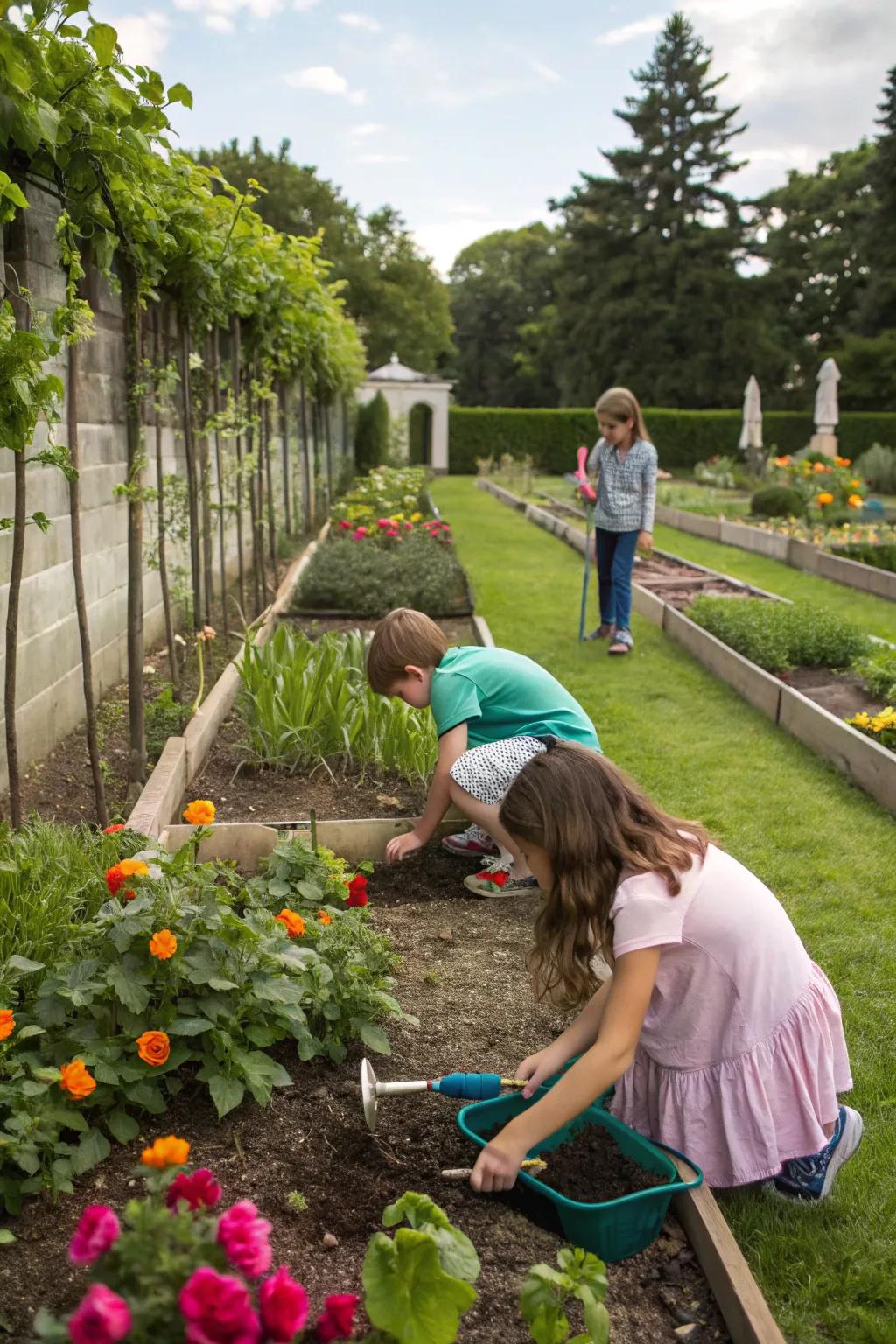
Designate areas for gardening activities to teach about plant biology and responsibility. My garden beds are a hit for hands-on learning with kids.
Products that could assist:
- Kids Gardening Tool Set: Equip young gardeners for fun and education with a colorful, kid-sized gardening tool set.
- Raised Garden Bed Kit: Create easy-to-maintain planting spaces with a durable raised garden bed perfect for all learners.
- Children’s Gardening Apron: Keep kiddos clean with a protective gardening apron, perfect for hands-on learning in the garden.
10. Edible Gardens
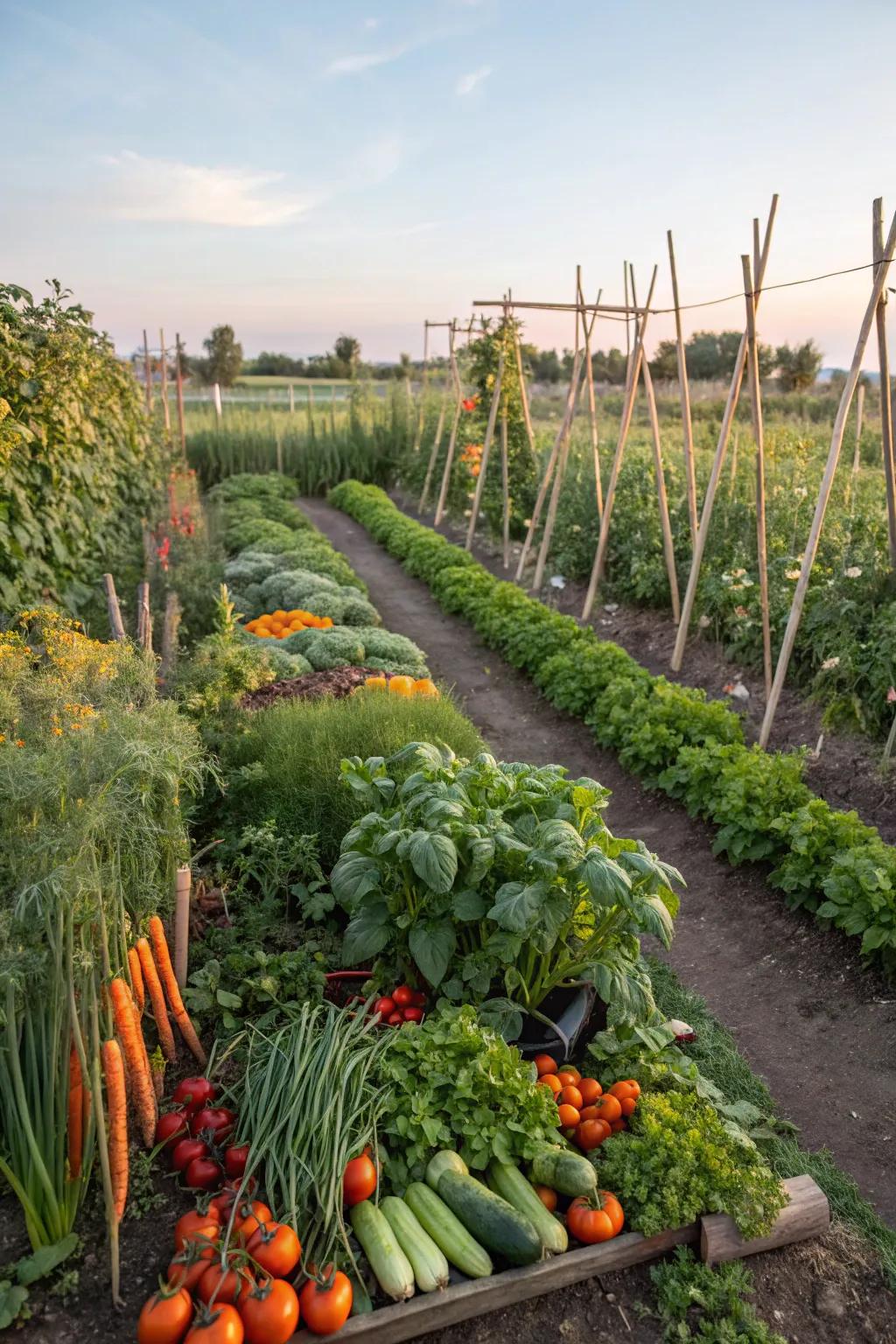
Grow an edible garden to teach about nutrition and sustainability. There’s nothing like picking fresh veggies from our backyard plot.
Explore these options:
- Vegetable Garden Starter Kit: Kickstart your garden with this easy-to-use starter kit. Ideal for beginners and experts.
- Organic Fertilizer for Vegetables: Boost your garden’s health naturally with organic fertilizer. Perfect for vibrant and healthy plants.
- Raised Garden Bed: Enhance your garden layout with a raised bed. Great for organized and accessible planting.
11. Living Walls
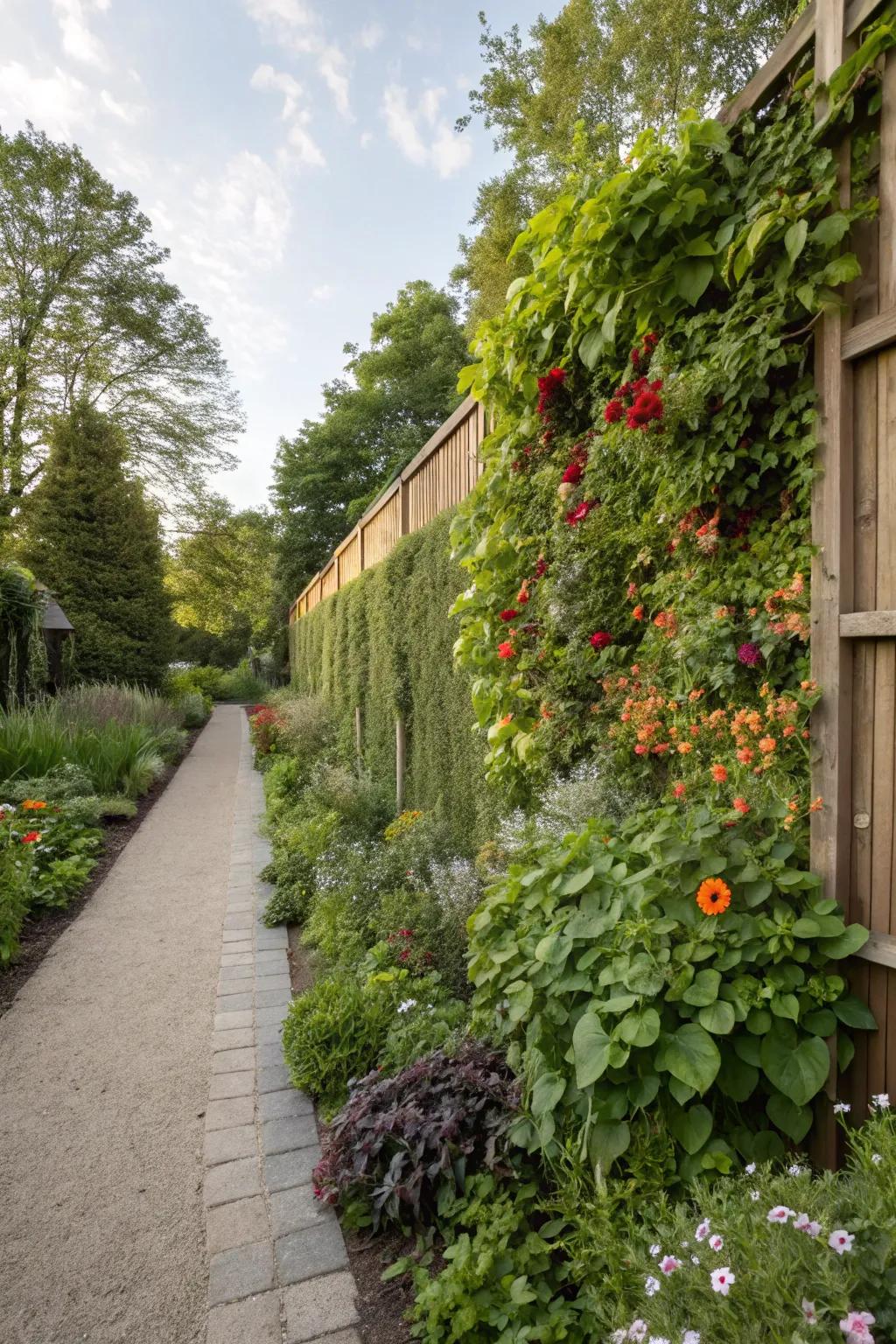
Install a living wall for a vertical garden that teaches ecology. My living wall thrives with herbs and flowers, offering a feast for the senses.
Check these products out:
- Vertical Garden Planter: Create a lush vertical garden effortlessly with this modular planter, ideal for herbs and flowers.
- Automatic Drip Irrigation Kit: Ensure consistent watering for your living wall with this easy-to-install drip irrigation system.
- Organic Herb Seeds Variety Pack: Start your living wall with this diverse pack of organic herb seeds for a fragrant garden.
12. Chalkboards and Drawing Walls
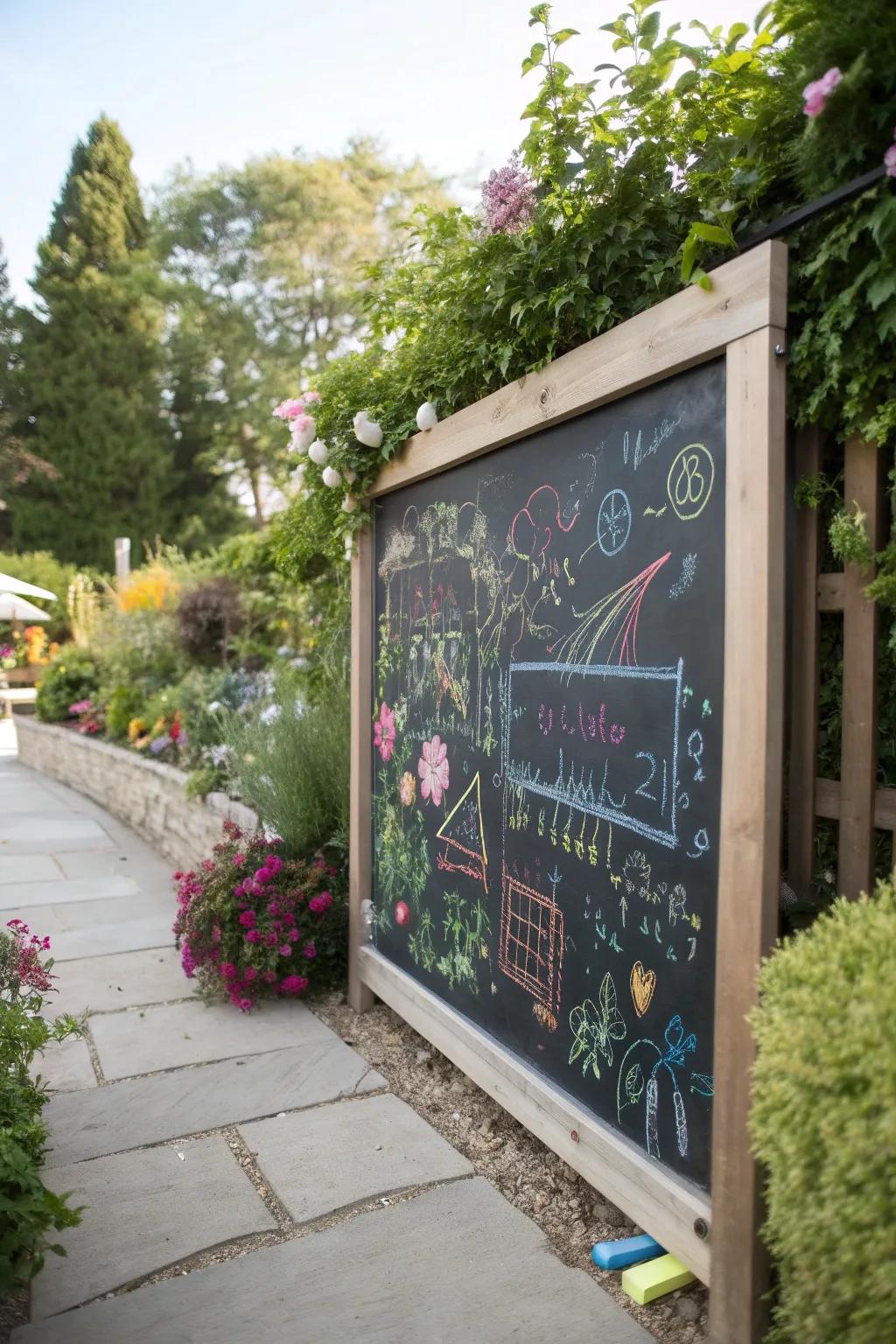
Install outdoor chalkboards for drawing and writing adventures. My garden wall serves as a canvas for budding artists and mathematicians alike.
These products might be useful:
- Outdoor Chalkboard Kit: Transform your garden wall with a durable, weather-resistant chalkboard for endless creative fun.
- Multi-Colored Chalk Set: Spice up your drawings with a vibrant, dustless chalk set perfect for outdoor use.
- Wall Mounting Hardware Kit: Securely install your outdoor chalkboard with this reliable wall mounting hardware kit.
13. Creative Decorations
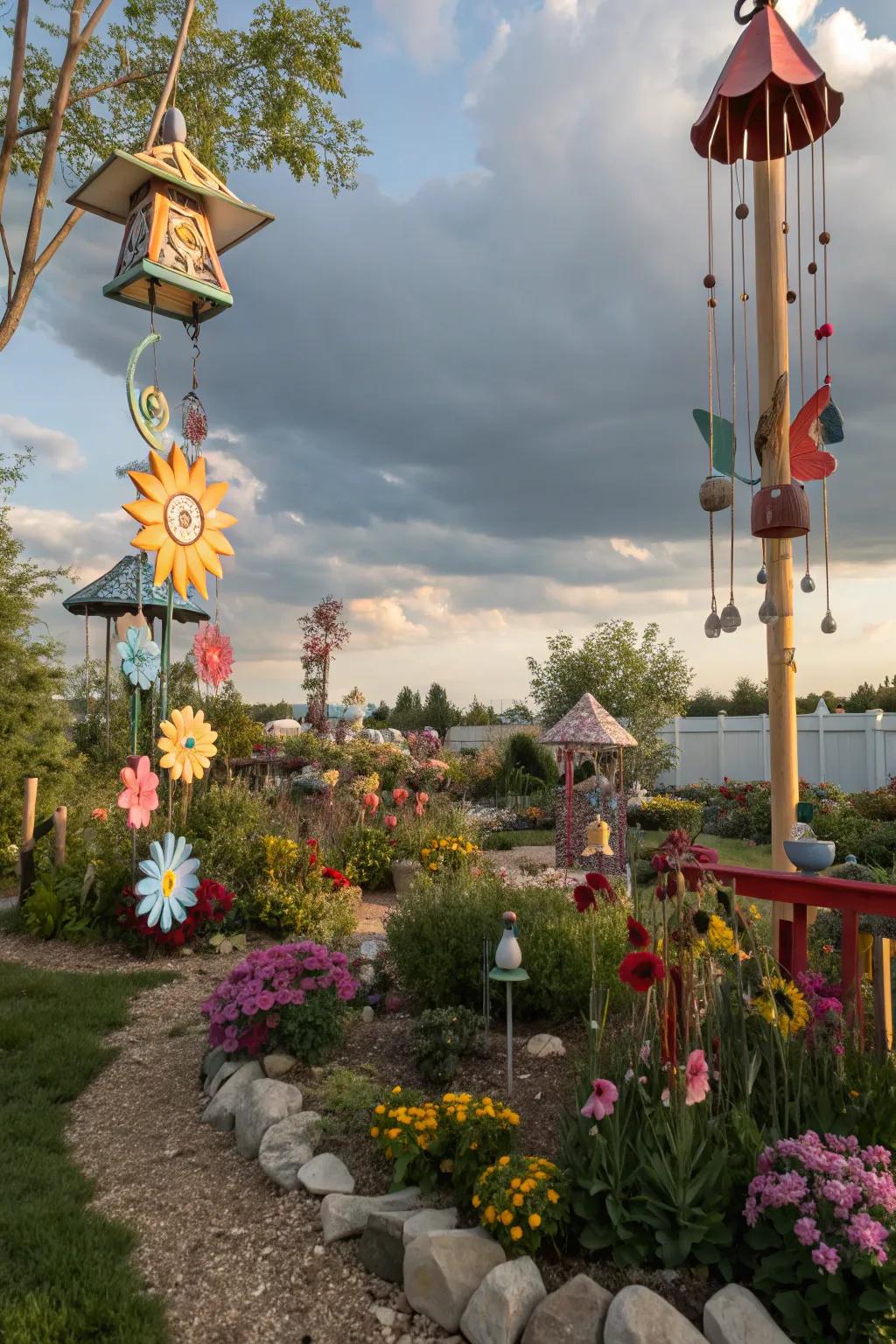
Use whimsical decorations to inspire and educate. My garden’s art installations always spark conversations and curiosity.
Items that may come in handy:
- Colorful Garden Wind Spinners: Add dynamic movement to your garden, sparking curiosity and conversation with vibrant wind spinners.
- Whimsical Outdoor Metal Art: Transform your space with playful metal art that inspires and educates curious minds.
- Decorative Garden Chimes: Create soothing sounds in your garden, adding an auditory element to your educational space.
14. Wildlife Habitats

Designate areas as wildlife habitats to attract birds and insects. My garden is a buzz of activity thanks to our pollinator-friendly plants.
A few helpful options:
- Birdhouse Set: Enhance your garden’s charm and welcome feathered friends with a charming birdhouse set.
- Pollinator-Friendly Seed Mix: Plant these seeds to attract a variety of pollinators and beautify your garden effortlessly.
- Insect Hotel: Provide a safe haven for beneficial insects and enrich your garden’s ecosystem naturally.
15. Interactive Water Features
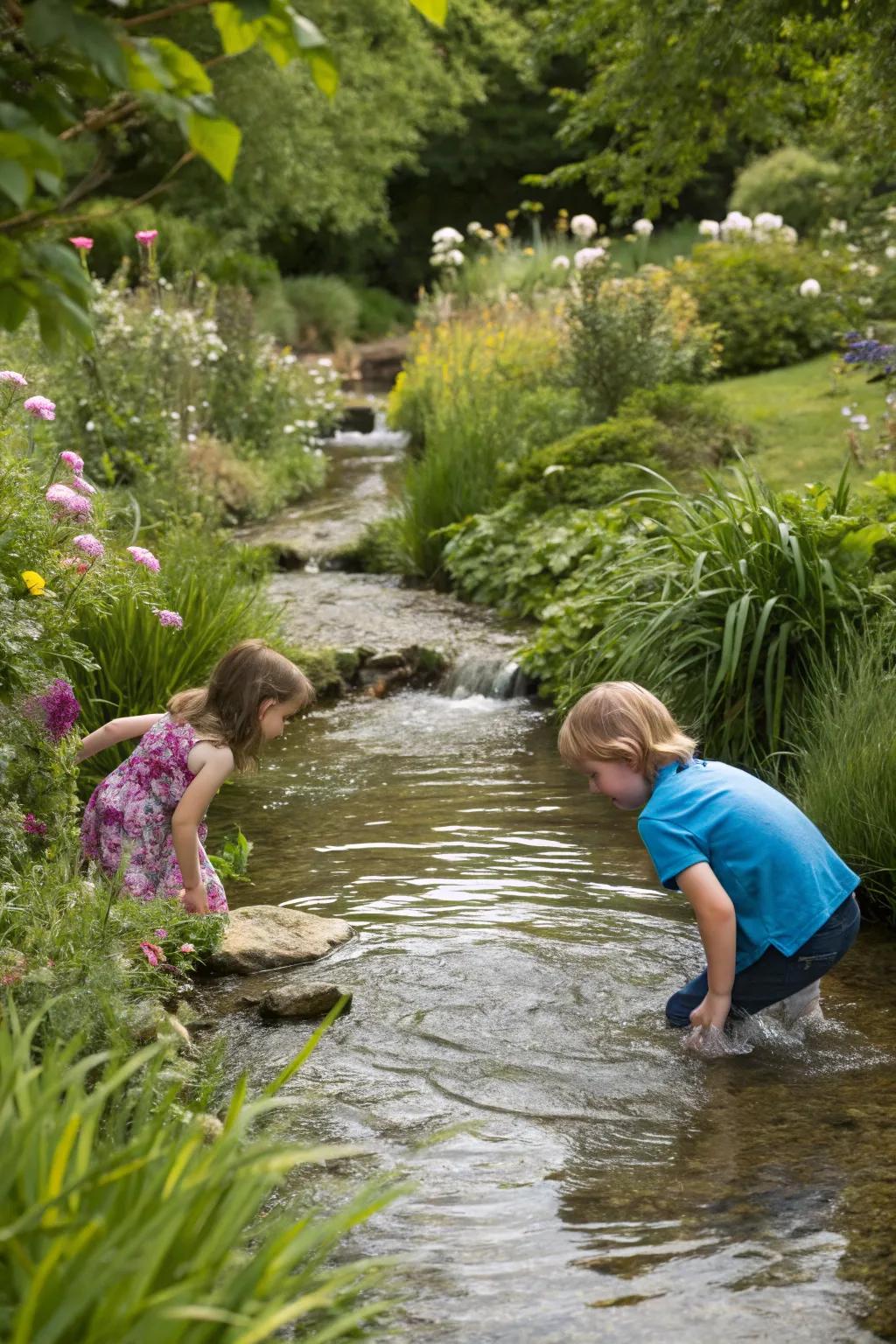
Introduce interactive water features like small streams or ponds for exploration. My backyard stream is a microhabitat full of life and learning.
Give these a look:
- Garden Water Pond Kit: Create a beautiful pond habitat that engages kids with nature and water exploration adventures.
- Solar Water Fountain Pump: Add motion with an eco-friendly solar fountain, perfect for brightening your backyard stream.
- Aquatic Plants for Ponds: Enhance biodiversity by planting aquatic plants and attract fascinating wildlife to your water feature.
